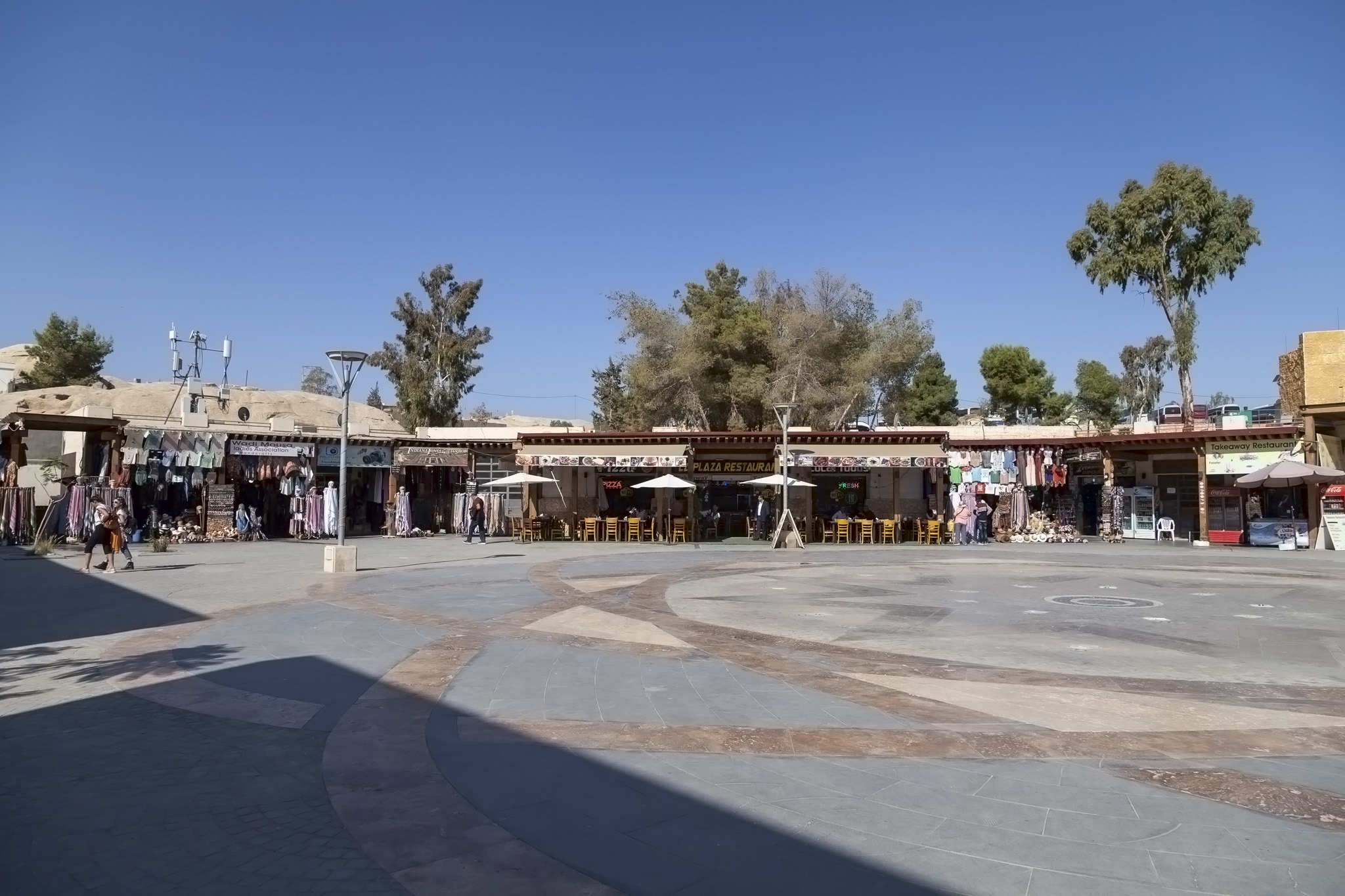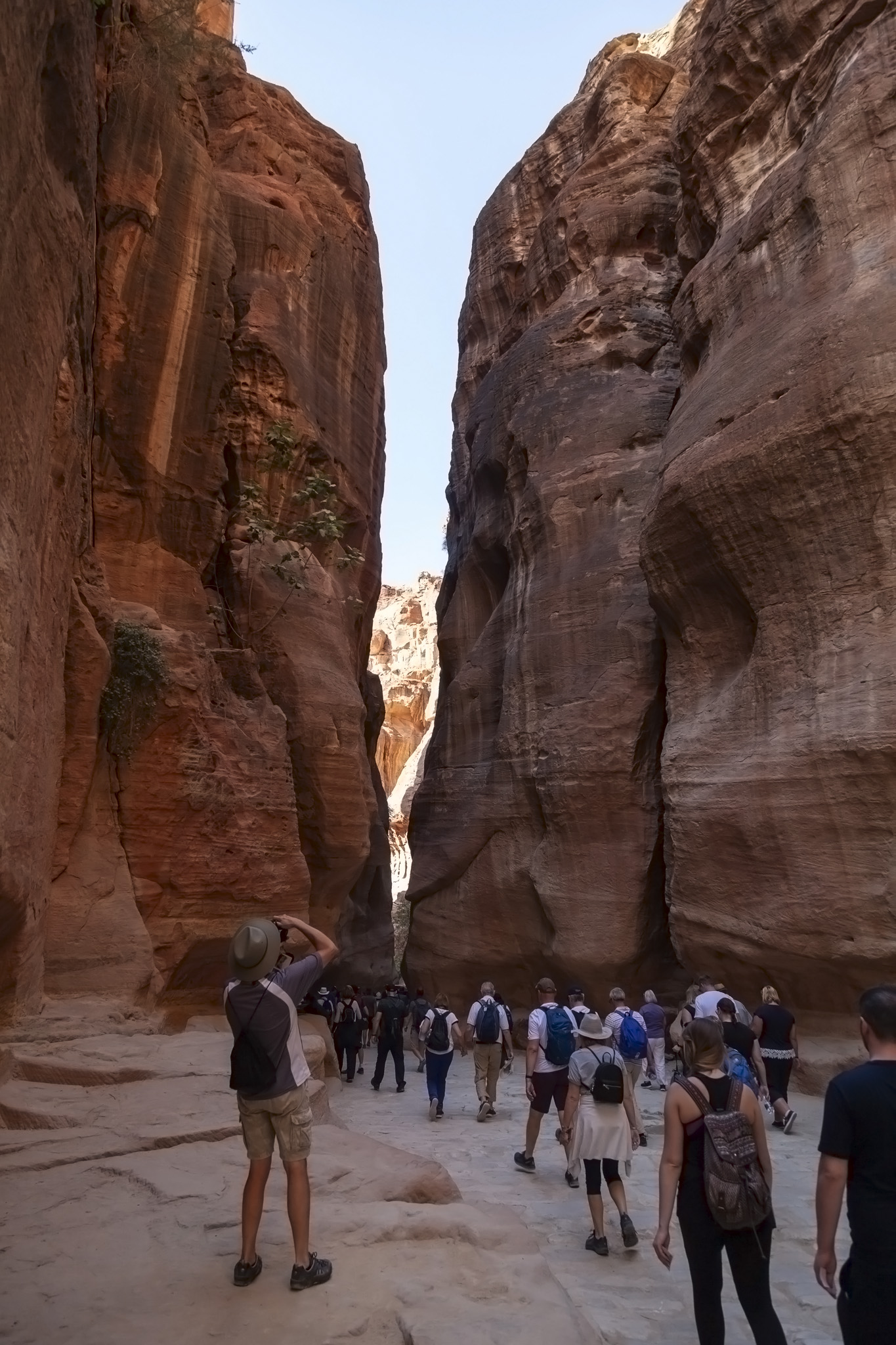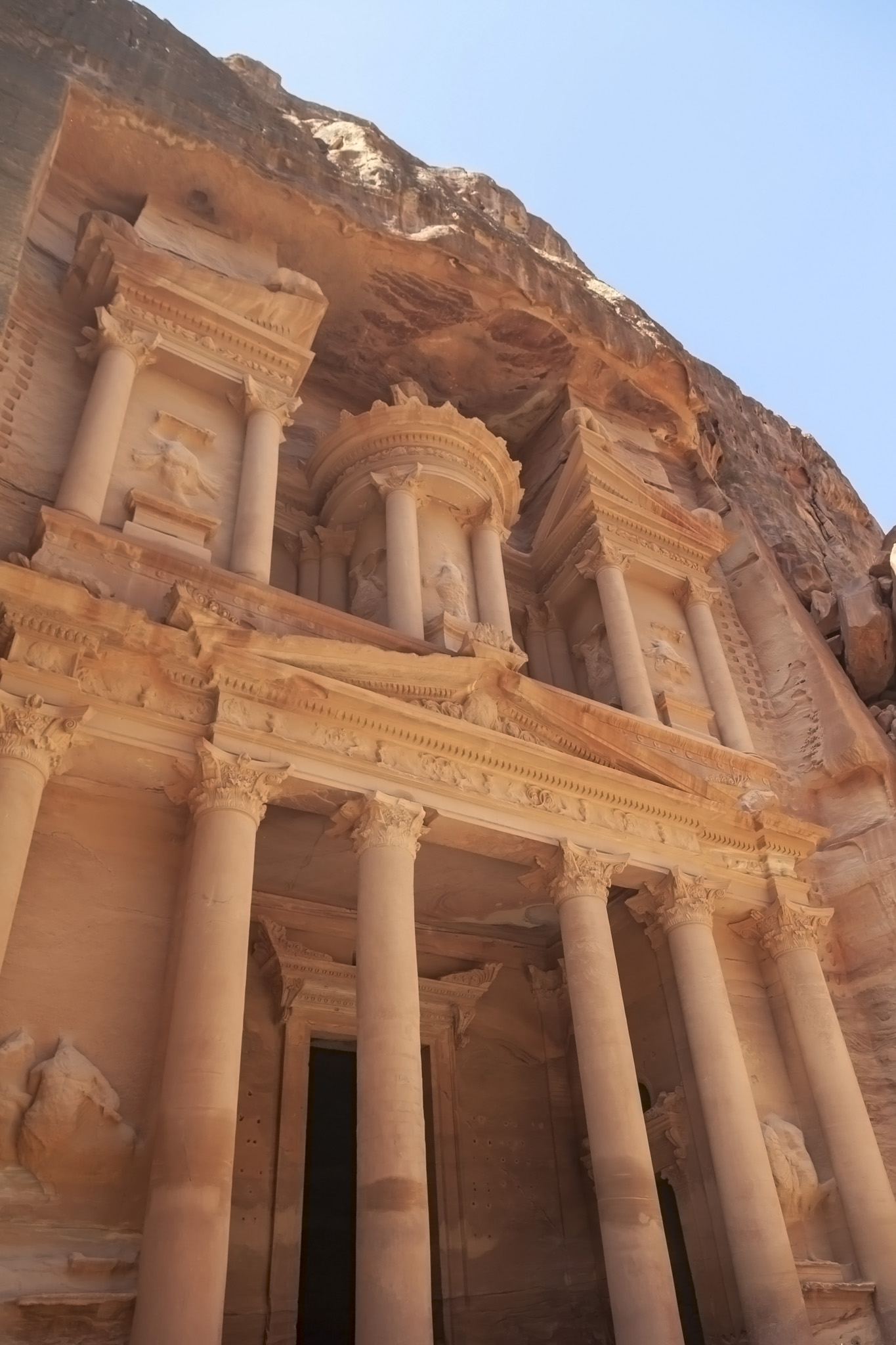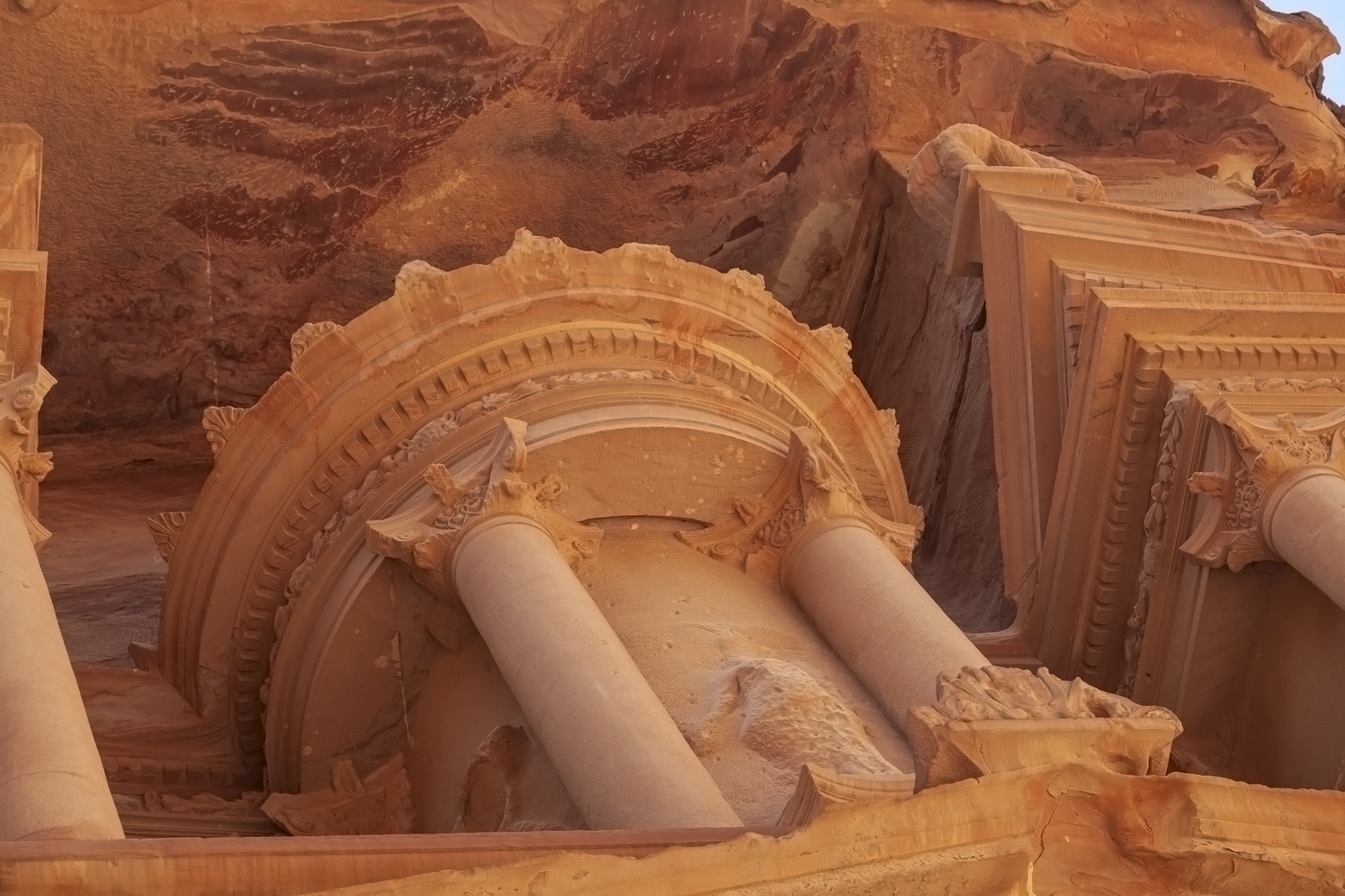Our Journey to Jordan cruise on Marella Discovery had finally reached Jordan! The ship itself was docked at Aqaba but this is the first of three parts covering our full-day excursion organised through Marella Cruises which took us inland to visit the ancient city of Petra. Marella offered a number of different tours for those wanting to see this UNESCO World Heritage Site but the one we picked was called Hike To The Monastery.
Now, if you’ve read previous accounts of when we’ve taken excursions with the word “hike” in them then you’ll know that we are absolutely awful when it comes to hiking. Neither of us is fit and my wife has old injuries that make uneven and uphill surfaces particularly painful to traverse, but we are both determined when it comes to taking on experiences we may not get the chance to attempt in the future so, for us, despite knowing we would probably suffer during and after it, choosing this particular excursion in Petra was an easy decision.
One thing that’s worth noting up front about this excursion is that it did not include a stop for lunch which other excursions did; instead, a packed lunch was provided on the bus and to call it basic would be a stretch. If you brace yourself for a piece of fruit, a piece of cake, and a small bottle of water then you might be pleasantly surprised at any additional components. That said, there are places to buy food in Petra itself so if you’ve got some cash on you you’ll be fine. You’re not supposed to take any food in but we didn’t see any checks taking place.
Let’s get onto the excursion then. We were off the ship nice and early and onto our bus without much delay. With this excursion being a strenuous one there was only one bus needed to cater for the number of cruise passengers who’d elected to do it. We had the usual moment of worry when we saw what some of the other people on the bus were wearing. It had been recommended that you wear multiple layers because it could apparently get cold in the higher altitudes we’d be reaching, for instance, and many were doing just that with t-shirts and shirts and light coats and walking sticks and belts and packs and hats and glasses on cords. My wife and I were in t-shirts, her with some leggings, me with shorts, and we each had one large bottle of water. It is possible that at other times of the year those layers everyone else was wearing would make sense but what we had turned out to be perfectly adequate and we saw some people make the decision to leave some of their layers on the bus at Petra when they realised that it probably wasn’t going to be quite as chilly as we’d been warned too.
The drive from Aqaba to Petra involves a security check when leaving Aqaba on account of it having a special economic zone status that means certain things aren’t taxed there. That is to help with imports, of course, but does make it a point where smuggling can occur as our guide explained. The drive heads north and starts ascending soon after and the landscape is barren, rugged, but really quite beautiful. The journey took around two hours and while we’d been told there would be a stop on the way there wasn’t and nobody was bothered by this.
From where the bus parked there was a short walk of a couple of minutes across a road, down a sloping area, and into the Visitors Centre. This was a large, circular space lined with souvenir shops and some information boards plus toilets for those who wanted to use them. We waited until all those who’d wanted to had done so.
Just before we made our way to the ticket area we were grouped in front of a map of Petra where we received a little bit more information about just what we’d be doing on this excursion. If you view the full size image below you’ll be able to see that the entrance where we were standing is on the right side of the map, the Treasury that everyone knows Petra for and where this first travelogue post will finish is low down and near the centre of the map, and our final destination of the Monastery is in the top left corner.
As with everyone else in our group we ignored the option of riding a horse or donkey down the main route which was included as part of the ticket entrance cost. We would also be ignoring the option to pay for a ride up the hiking trail too. We didn’t see any of the animals being mistreated – the occasional slap on the rump, perhaps, to guide them from their handlers – and there were signs asking people to report any instances of cruelty but the whole tourist-riding-an-animal thing simply doesn’t sit well with us.
One of the first sights along the walk from the vistors centre to the entrance to the Siq, the narrow gorge that takes people to the Treasury at Petra, were the Djinn Blocks. It’s from djinn that we get our word genie and the purpose of the blocks is unknown for certain although their presence close to tombs may indicate a funerary connection. Should you find yourself in possession of three wishes following a lamp-rubbing incident perhaps you can find out.
Opposite the Djinn Blocks were a couple of important tombs, the most visually-appealing of which was the Obelisk Tomb even though the relief designs on the front were actually nefashot. The four columns likely represent the four people buried in the the chambers within.
The walk from the visitors centre to the entrance to the Siq was about a kilometre and was gently downhill for the most part. The walk through the Siq was also gently downhill and if you’ve got a keen sense of how directions work you’ll have realised by now that this means the return walk was uphill for its entirety, and while that slope is fairly gentle in appearance it turns out that a few kilometres of it constantly can be quite a strain on the calves. If you’re not used to that sort of walking then keep an eye on the clock and how long it takes you to get down to where you want to be in Petra because you’re going to want to add half that time back on for the return trek.
The entrance to the Siq was marked by locals dressed up as ancient Nabataean warriors. The Nabataean people were chiefly responsible for most of Petra’s functions and designs. Arabic in origin, the Nabataeans loosely controlled a series of trade routes in this region of the world for around 500 years from the fourth century BCE onwards, and Petra’s location and ability to be defended thanks to its walled gorges eventually saw it become their capital.
When people think of Petra they’re most likely thinking of the sight of the Treasury and also the walk through the Siq that leads to it. Literally meaning shaft, the Siq is a little over a kilometre long and winds through the rock walls of the area which at points are only three metres apart and over ninety metres in height. This natural gorge is the result of a tectonic split later smoothed down with water erosion and you can expect to get neck ache walking through as your eyes will constantly be taking your head on journeys up those walls and across the natural and carved niches and occasionally shockingly-red colouring of the sandstone.
We stopped a couple of times on the walk through the Siq, mostly to make sure that everyone was keeping up. Our guide was very keen that we not dawdle as he wanted us to make the most of the time we had at Petra and he got no complaints from us in that respect. From the entrance to the Siq until seeing the Treasury the walk took us about twenty minutes.
Understandably, after twenty minutes of walking everyone began stopping of their accord whether they were part of our cruise excursion group, part of some other tourist group (of which there were many), or individual travellers; the reason, obviously, was that classic image of the Treasury seen through the western entrance of the Siq.
Its Arabic name is Al-Khazneh and the name was picked up because of the belief that there were treasures within. It was most likely just a mausoleum, though, as determined from the sculpted eagles which were thought to carry away the souls and by the images of Castor and Pollux, twins who lived partly in the underworld. The sculpting of the structure in the sandstone cliff would have taken place in the first century CE.
The Treasury was certainly impressive to see in person and it’s one of those places that benefits from having someone in front of it to truly get a sense of scale. The relief is forty metres in height. You can see this more clearly in the photo and video (temporarily removed) below.
The area in front of the Treasury was in almost total sunlight and the contrast with the shaded walk down the Siq to reach this part of Petra was intense. We managed a couple of minutes of photos of the surrounding sandstone before huddling in close to one of the walls where the sun couldn’t quite reach us. We had about fifteen minutes in this spot to allow people to take a look at some of the stalls offering souvenirs or coffee, the latter of which which didn’t appeal to us and the former of which we wanted to wait until after we’d completed our hike to the Monastery.
Naturally, this was a very popular spot for tourists with everyone either taking photos of the Treasury or posing in front of the structure. For many this would have been the main or indeed only thing they would have come to see. This was also a popular spot for hiring camels and donkey-led wagons either to head further into Petra or to head back through the Siq and avoid that uphill slog.
After our short time at the Treasury our guide called us together and led us off down the Street of Facades.
In the second part of this travelogue series covering our visit to Petra I’ll take us past the parts of Petra that sprang up during its period of absorption into the Roman empire all the way to Ad-Deir, the Monastery, ahead of the final part recounting our return hike all the way back and a surprising and very welcome discovery in the Rose Red City.




























































